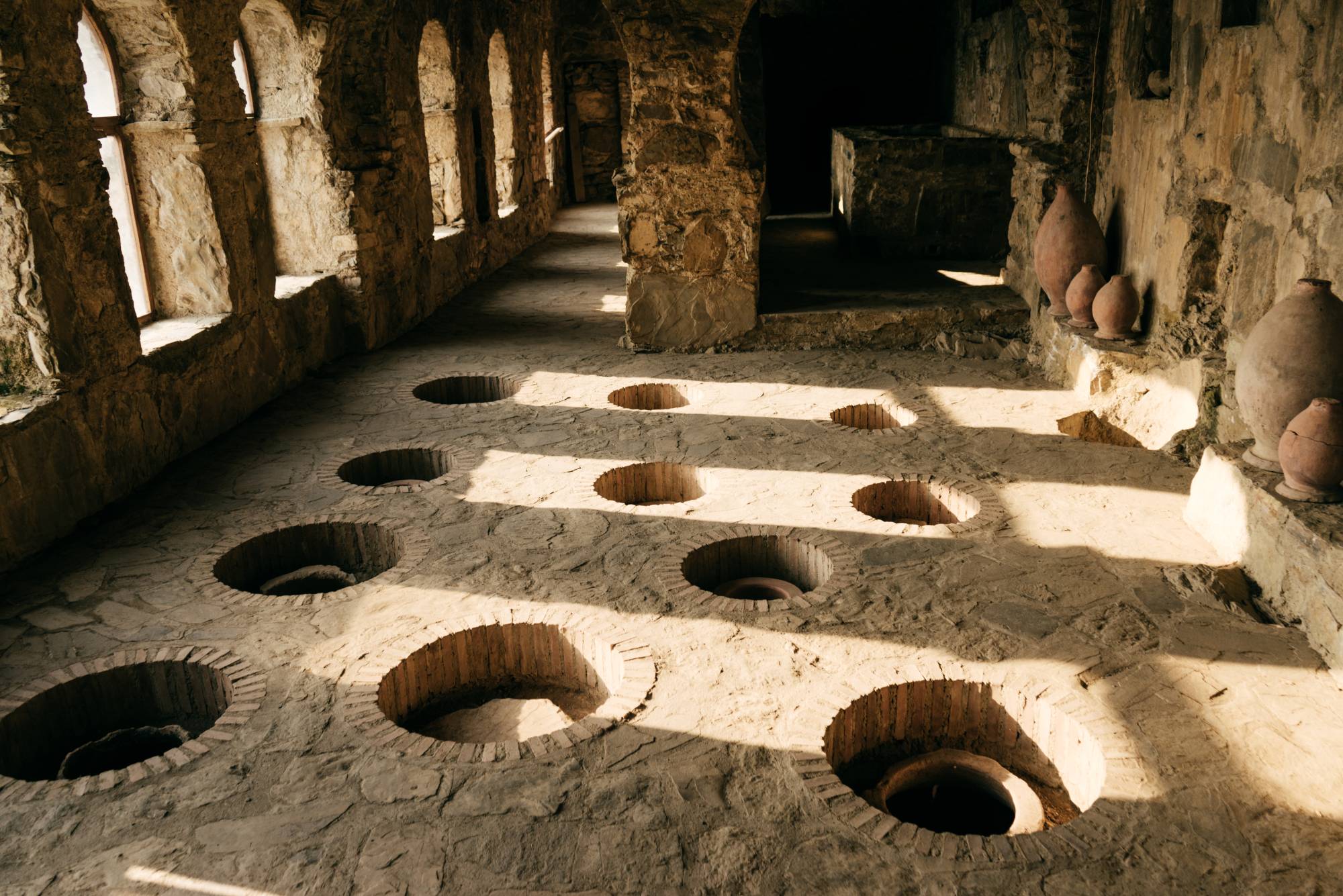Georgia is often referred to as the birthplace of wine, a title that is supported by archeological evidence dating back 8000 years. The secret to Georgia’s ancient winemaking heritage lies in its unique method that is both time-honored and distinctive — the use of kvevri.
The word ‘kvevri’ denotes large, egg-shaped earthenware vessels that are buried underground, and it is in these vessels that the magic of Georgian winemaking truly comes alive. This traditional process, recognized by UNESCO as an Intangible Cultural Heritage, takes the relationship between wine, earth, and mankind to a spiritual level. So let’s embark on a journey to understand this unique Georgian winemaking process from the kvevri to the wine glass.
Step 1: Harvesting the Grapes The winemaking process starts in the vineyard. Georgia boasts over 500 indigenous grape varieties, the most famous being Saperavi (red) and Rkatsiteli (white). The grapes are harvested manually to ensure only the best quality is selected.
Step 2: Pressing and Preparing for Fermentation The harvested grapes are pressed traditionally, often in a wooden device called a “satsnakheli”. The juice, grape skins, stalks, and pips – collectively called the “pomace” – are then poured directly into the kvevri. Unlike most Western winemaking methods, the Georgian process doesn’t separate the juice from the rest of the grape components during initial fermentation.
Step 3: Fermentation in the Kvevri The kvevri, filled with the pomace, is sealed with a wooden lid and then covered with soil. Fermentation takes place naturally due to wild yeasts present on the grape skins. The kvevri’s egg-like shape encourages circulation as fermentation proceeds, while its underground placement provides a stable temperature, perfect for the slow transformation of grape juice into wine.
Step 4: Maturation and Decanting After fermentation, the lid remains sealed and the wine is left to mature in the kvevri. The grape solids gradually sink to the bottom, and after several months (usually six or more), clear wine is carefully decanted from the top.
Step 5: Serving the Wine The final product is a wine rich in tannins with a unique taste profile. The white wines, due to extended contact with grape skins, possess an amber color and a complexity more often associated with reds. These wines, served in traditional Georgian wine glasses, are a celebration of an ancient tradition that has withstood the test of time.
The journey from the kvevri to the wine glass encapsulates a process that is inextricably tied to Georgia’s history, culture, and identity. It’s a process that respects the natural rhythm of nature, allowing the grape to express itself with minimal human intervention. When you take a sip of Georgian wine, you are not only tasting a wine, you are experiencing a piece of history, the echo of an ancient tradition, and the soul of a country.





0 Comment